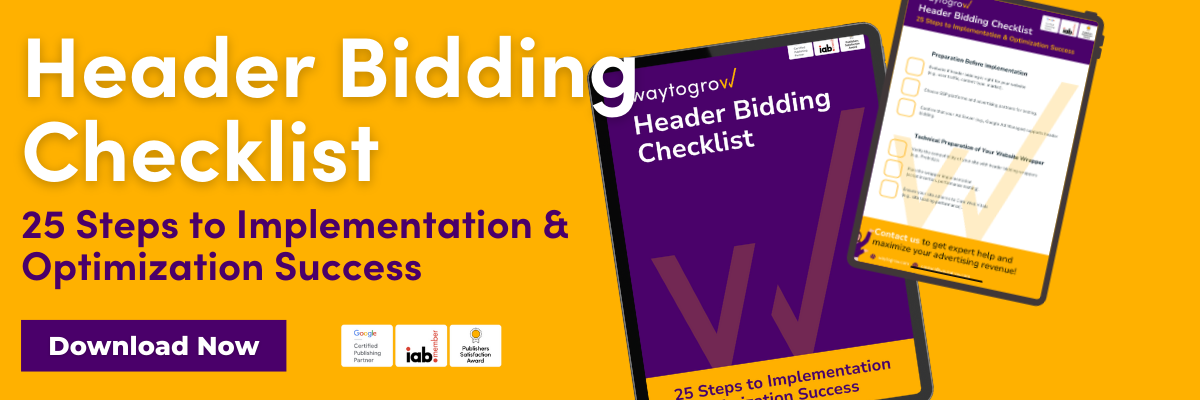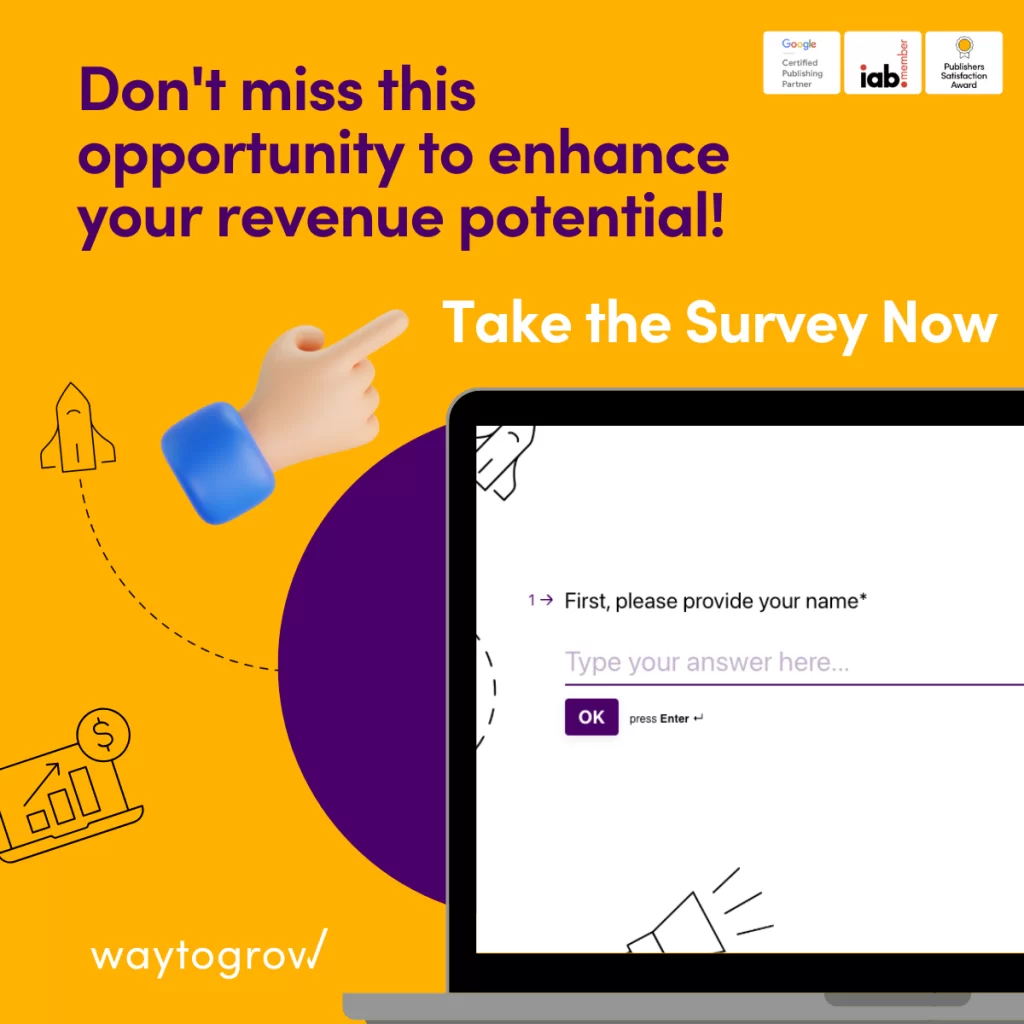- What is a Header Ad and Why is it So Effective?
- How Does Header Bidding Work?
- Header Bidding vs. Open Bidding: What’s the Difference?
- How to Maximize Revenue with Google Header Bidding?
- The Importance of Ad Placement: Why Header Ads Shine
- What Are the Best Banner Ad Sizes for Header Ads?
- Pre-Bid Programmatic Advertising: A Smart Move?
- How Can Header Ads Improve User Experience?
- What Lies Ahead for Header Bidding? Future Trends in Digital Advertising
- How to Use Header Ads in Your Newsletter Marketing
Header ads are a game-changing aspect of the current digital marketing industry, delivering premium visibility and increasing brand recognition for the advertiser. As ads are hosted at the top of web pages, they are guaranteed to catch the eye of users, making an invaluable enhancement to your advertisement strategy. This article will guide you through every step of header ads and their real-time bidding process, helping you make the most of it. This review is designed both for those new to digital ads and for those looking to level up their skills. It’s a must-read!
What is a Header Ad and Why is it So Effective?
Internet display advertising includes a wide range of options, and header ads are one of its most visible examples. Being posted at the very top of a web page, these banner ads are hard to miss. The purpose of a header ad is clear – it serves to capture the user’s attention as the first thing the audience sees. As a result, header ads have unusually high click-through rates. They are also exceptional for brand advertising, as they introduce the product or service across the entire page.
This type of display advertising owes its effectiveness to alignment with the user’s browsing behavior. There is no single type of header ad that leaves a strong impression on all potential buyers. For different customers, some header ads are static images, while others are animated banners. The role of header ads in a marketer’s toolkit is defined by how effectively they engage during the user’s brief session.
How Does Header Bidding Work?
Header bidding is an advanced programmatic advertising method where multiple advertisers place bids on available ad space before the publisher’s ad server decides. This leads to an auction, and the highest bidders win, generating more income for the publisher.
This method is more effective because traditional ad servers and SSPs limit the number of participants in an auction. With header bidding, more participants are allowed, and all demand sources, including SSPs, can submit bids in one auction. This reduces inefficiencies and waste, making the process more efficient than traditional advertising methods.
Header Bidding vs. Open Bidding: What’s the Difference?
While both header bidding and open bidding were developed to increase competition for ad inventory, they remain different. In header bidding, the auction takes place in users’ browsers, and bids are placed before the ad server decides which ad to display. This allows demand sources to compete against each other in real-time, driving higher CPM and maximizing ad spend.
In open bidding, all demand sources compete for ad inventory in an auction that takes place on the server side. This method can limit competition, as rarely do all potential bidders participate in the auction.
How to Maximize Revenue with Google Header Bidding?
Google has adopted header bidding through its Google Ad Manager platform, offering publishers a straightforward way to integrate this strategy. Header bidding opens valuable ad space to advertisers, ensuring that the highest bid secures the placement, maximizing revenue for the publisher.
To maximize revenue, it’s crucial to optimize ad placement. Ads should be of the appropriate size and format to meet user expectations. Using Google’s targeting options helps advertisers reach the right audience at the right time, increasing impressions and ROI.
The Importance of Ad Placement: Why Header Ads Shine
Ad placement plays a critical role in digital advertising. Header ads are positioned at the top of the website, which is the most prominent location users check. This prime placement ensures that most users are likely to click on the ad.
The success of a header ad largely depends on how well it is integrated into the rest of the website. Proper placement, along with the right ad size and format, enhances the overall user experience and encourages more clicks.
What Are the Best Banner Ad Sizes for Header Ads?
The size of banner ads is critical for optimization. The format often depends on the screen size where the ad appears. One of the most common sizes for header ads is the leaderboard, which has proven effective in capturing user attention. While ensuring the ads are the right size, they should also not interfere with the user’s experience on the website.
Pre-Bid Programmatic Advertising: A Smart Move?
Pre-bid programmatic advertising allows advertisers to allocate their budget before ad inventory becomes available for auction. By predefining bidding parameters, campaigns can be optimized for a specific audience and performance, giving advertisers more control over ad spend and results.
This method increases efficiency and eliminates wasted impressions, ensuring advertisers have the right systems in place to reach their target audience effectively.
How Can Header Ads Improve User Experience?
When done right, header ads can be unobtrusive and provide relevant information in a visually appealing way. It’s essential that header ads engage users without interrupting their experience. Balancing visibility and subtlety is key to their success.
Advertisers must ensure that header ads load quickly and don’t negatively impact page performance. Using optimized ad code and custom shortcodes can improve load times, creating a better user experience and increasing viewability.
What Lies Ahead for Header Bidding? Future Trends in Digital Advertising
Header bidding has rapidly evolved, with promising future trends such as server-side header bidding and in-app header bidding. These technologies allow advertisers to participate in auctions more efficiently, reducing latency and enhancing the bidding process.
As technology continues to develop, header bidding will expand its capabilities. Integration with AI and machine learning will enable smarter bidding decisions, helping both publishers and advertisers succeed in the evolving digital landscape.
How to Use Header Ads in Your Newsletter Marketing
Header ads aren’t just for web pages; they can also be highly effective in newsletters. Placing header ads at the top of a newsletter ensures that readers see your message first.
For success, newsletter header ads should be clear, visually appealing, and relevant to the email’s content. Including a strong CTA will also increase the likelihood of a click from the reader.
Share on:











